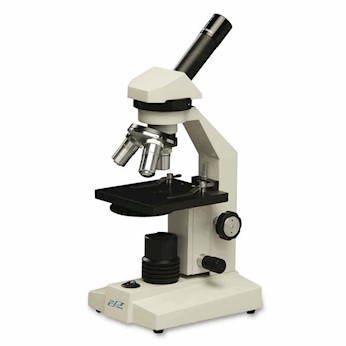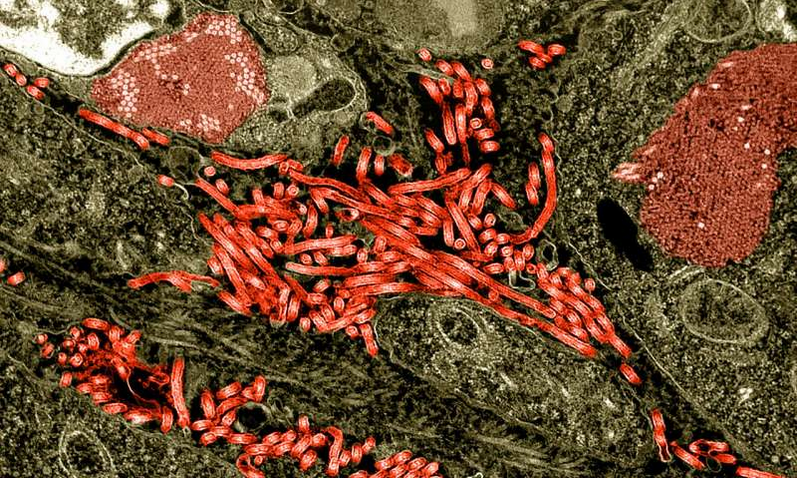Site author Richard Steane
The BioTopics website gives access to interactive resource material, developed to support the
learning and teaching of Biology at a variety of levels.
|
Site author Richard Steane
|
The BioTopics website gives access to interactive resource material, developed to support the
learning and teaching of Biology at a variety of levels.
|
|














 Scanning electron micrograph close-up of a weevil (Curculionidae family) - its snout is just over 100 microns wide.
Scanning electron micrograph close-up of a weevil (Curculionidae family) - its snout is just over 100 microns wide.
 Acanthamoeba polyphaga
Acanthamoeba polyphaga
 Scanning electron microscope image of a leaf from a Black Walnut tree. Image shows a cross-section of a cut leaf, its upper epidermal layer, mesophyll layer with palisade cells and vascular bundles, and lower epidermal layer. The protrusion at center is just over 50 microns tall.
Scanning electron microscope image of a leaf from a Black Walnut tree. Image shows a cross-section of a cut leaf, its upper epidermal layer, mesophyll layer with palisade cells and vascular bundles, and lower epidermal layer. The protrusion at center is just over 50 microns tall.



 Here a strip of embedded sections is coming off a microtome
Here a strip of embedded sections is coming off a microtome
 Freeze fractured suspension of cultured kidney epithelial cells originally extracted from an African green monkey (Chlorocebus sp.)
Freeze fractured suspension of cultured kidney epithelial cells originally extracted from an African green monkey (Chlorocebus sp.)

 Toluidine blue is a useful general stain for nuclei.
Toluidine blue staining also visualizes proteoglycans in cartilaginous tissues because of its high affinity for the sulfate groups in proteoglycans.
Toluidine blue is a useful general stain for nuclei.
Toluidine blue staining also visualizes proteoglycans in cartilaginous tissues because of its high affinity for the sulfate groups in proteoglycans.
 Iodine solution (or more correctly iodine in potassium iodide solution) can be used to identify starch grains in plant cells.
Iodine solution (or more correctly iodine in potassium iodide solution) can be used to identify starch grains in plant cells.![105175_hematoxylin_Eosin_stomach[105175_hematoxylin_Eosin_stomach-ALL] (61K)](105175_hematoxylin_Eosin_stomach[105175_hematoxylin_Eosin_stomach-ALL].jpg)
 Astra-blue stains unlignifed cellulose blue, and safranin stains lignin red.
This section shows delignification starting from the lumen (arrowheads) and intact fibers surrounded by attacked fibers (arrow).
Astra-blue stains unlignifed cellulose blue, and safranin stains lignin red.
This section shows delignification starting from the lumen (arrowheads) and intact fibers surrounded by attacked fibers (arrow).




| Transmission Electron Microscope (TEM) | Optical microscope | |
| uses | electrons | light [photons] |
| principles of operation | electrons pass through / enter (thin) specimen denser parts absorb more electrons so appear darker |
light passes through (transparent sections of) specimen light of different wavelength passes through so parts of image are coloured |
| magnification not usually credited in exam answers! |
greater (up to 1,000,000x?) | less (500-1000x) |
| resolution & reason |
greater/finer (down to 0.2 nm) electrons have short wavelength |
less (down to 200nm) light has longer wavelength(s) |
| detail visible in cell organelles |
greater - e.g. internal detail of membranes in mitochondria and chloroplasts, E.R., Golgi and vesicles- even ribosomes! | less - gross external detail only for nuclei, - maybe mitochondria, chloroplasts (& Golgi ?) if you are lucky |
| status of specimens | only dead/dehydrated | live possible |
| image colour | no intrinsic colour (shades of grey only) |
own colour of specimen/ stain visible |
| specimen preparation | more complex/ difficult / more likely to produce artefacts |
less complex |
| section thickness | must be thinner | sectioning not always essential |
| focussed using | (electro)magnets | glass lenses |
| Stage in process | Reason |
| Cut into small (1cm) chunks or squares and just cover with liquid which is: |
(see below) |
| ... isotonic solution | to prevent damage to mitochondria / chloroplasts /organelles
{not whole cells which will soon be burst!} |
| ... kept cold using ice bath | to prevent/reduce damage by enzymes |
| ... buffered (pH between 6.7 and 7.4) | to prevent protein/enzyme denaturation (by acid?) |
| Homogenise animal material with blender/ grind plant material with pestle and mortar | to break open cells and release intracellular organelles |
| Filter using muslin or coarse filter paper | to remove (large) debris or whole cells |
| Centrifuge filtrate (at lower speed/1000 g) | to separate nuclei/cell fragments/ heavy organelles |
| Re-centrifuge supernatant/after nuclei/pellet removed at higher speed (3000g) | to get mitochondria/chloroplasts in pellet/at bottom |
| Transmission Electron Microscope (TEM) | Scanning Electron Microscope (SEM) | Dissection microscope (stereo microscope) |
| Stream of electrons passes through specimen and directly onto screen | Stream of electrons passed from side to side across specimen - secondary electrons reflected/scattered from surface of specimen - require to be collected and integrated to give image |
Light reflected (in all directions) from surface of specimen - may be lit from above or below, or both |
| specimen is thin layer (sectioned), on grid in middle of vacuum chamber | specimen is not sectioned (may be left whole), on stud at bottom of vacuum chamber | specimen is not sectioned (may be left whole and alive) and in fresh air! |
| parts of specimen contain electron-dense stains | metallic coating on surface | no need for stain |
| shows internal detail within cells | shows external view only | shows external view only (but may be used for wide angle view of slides) |
| preparation has more stages: fixation, staining, embedding, sectioning | fairly simple preparation (except freeze fracturing/etching) | no processing required |
| flat 2-D image | image gives impression of depth - but is not truly stereoscopic | image gives good impression of depth - truly stereoscopic (separate light path and images for left and right eyes) |
| controls to move image to left/right and up/down | image can be moved or rotated | specimen can be moved by the thumbs | greater magnification: 1,000,000 x
resolution 0.2 nm |
slightly lower magnification: 100,000 x
resolution 2 nm |
much lower magnification: up to 70 x
resolution irrelevant |
